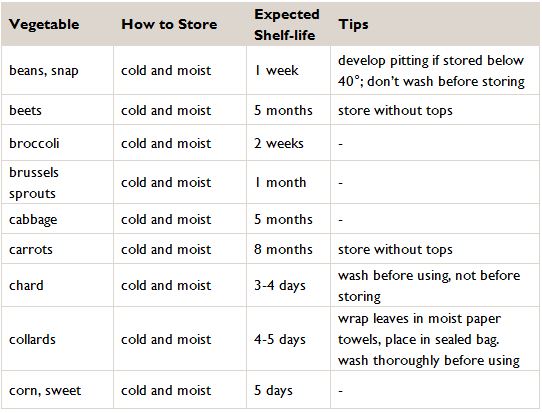Blog

Keeping Your Harvest Fresh
Have you ever found yourself throwing out vegetables or fruits because they went bad before you got to using them? Americans throw away an alarming amount of food; according to the Natural Resources Defense Council, the average American wastes 20% of their vegetables and 15% of fruits.
Whether you’re harvesting vegetables from your own garden or picking them up at the farmer’s market or grocery store, you don’t want your veggies going to waste. Knowing how to properly store produce is important to help it stay fresh as long as possible, and reduce its chances of being tossed.
Different vegetables need different storage conditions- they shouldn’t all just be thrown in the fridge! Temperature and humidity are the main storage factors; there are three combinations for long-term storage:
cool and dry (50-60°F and 60% relative humidity)
Basements are generally cool and dry.If you store vegetables in your basement, provide them with some ventilation (don’t use plastic bags), and protection from rodents.
cold and dry (32-40°F and 65% relative humidity)
Refrigerators are generally cold and dry, don’t put veggies that require these conditions in plastic- leave them unbagged, or use paper bags or boxes.
cold and moist (32-40°F and 95% relative humidity)
Put vegetables in perforated plastic bags in the refrigerator for cold and moist conditions.Unperforated plastic bags often create too humid conditions, which lead to condensation and growth of mold or bacteria
For your reference, specific storage information for some common vegetables is below (expected shelf-life times are only estimates).




